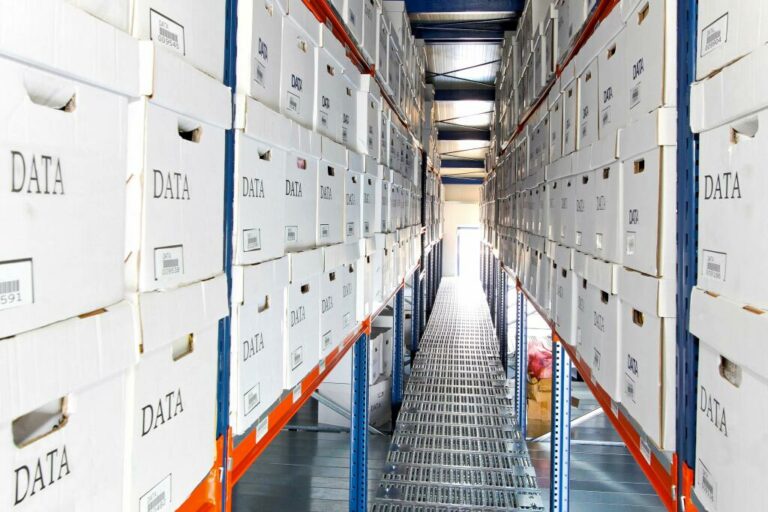If management does not demonstrate a strong commitment to security, there is little chance that the rest of the organization will. Without a clear mandate from the CTO down, it will be nearly impossible to cultivate a culture that takes security seriously. Knowing the answer to the question “https://globalcloudteam.com/ methodology” and why DevSecOps practices are critical can assist you in taking the appropriate steps to protect your organization from security risks. According to a recent study conducted by IDC, the global pandemic has accelerated the adoption of DevOps and DevSecOps practices, resulting in increased demand for new services and application usage. As a result, nearly 75% of all businesses have accelerated their DevSecOps efforts.

They must co-exist in order for organizations to maximize their business benefits. But unlike DevSecOps, it doesn’t cover software delivery through testing, QA, and production. DevSecOps completes the picture by providing methodologies and tools to facilitate agile adjustments.
Learn How Lightspin Can Bolster Your DevSecOps Practices
“The intent was to reduce the time it takes to get changes and updates into production, ultimately allowing organizations to become more agile,” Wright says. At its core, DevOps removed the traditional walls – whether physical, cultural, technical, or all of the above – isolating development and operations teams from one another. Ensuring license compliance in OSS dependencies is a growing concern for compliance managers, legal teams and CEOs alike. No-one wants to be on the receiving end of a failed audit, or an expensive Intellectual Property or license infringement case. Knowing what OSS is being used, by which developers and in which builds and releases is of huge importance. JFrog Xray benefits from having a tight integration with VulnDB, it’s primary source for vulnerability and license compliance intelligence.
- The integration of security checks into the development workflow means that compliance with government regulations can be baked into the process.
- To detect new zero-day vulnerabilities, you need to monitor existing applications in your production environment.
- For instance, while introducing static application security testing , it is better to turn on only one or two security checks at a time.
- By using tools that can scan code as you write it, you can find security issues early.
- This type of test takes time to execute and uses tools like dynamic application security testing tools designed to detect live application flaws.
- Another important element is to enable traceability of production issues to the specific build and code component that caused the issue, enabling developers to quickly remediate the issue.
At the same time, software makers face pressure to release code at a faster pace than ever before. This requirement is potentially at odds with security, but DevSecOps offers a way forward. With DevSecOps, software makers can execute a rapid SDLC while maintaining a strong security posture. The implication of DevSecOps is that it’s DevOps, with security added as an integrated, collaborative part of the entire workflow. It’s not, to borrow a phrase from the old days of coding, “thrown over the wall.” It’s important to note, however, that DevSecOps also implies the use of special tools and automation.
Automation compatible with modern development
Security staff should use the same collaboration tools used by developers and operations (issue trackers, chat, etc.) to jointly prioritize security issues for remediation. Identity and access management consists of methods that use centrally defined policies to control access to data, applications and devsecops software development other network assets. IAM should govern access to all aspects of the DevOps environment, at every stage of the SDLC. This helps prevent unauthorized access to sensitive systems and blocks lateral movement. DevOps is a popular concept with various definitions that have emerged over the last decade.
For DevSecOps to succeed, teams can’t expect DevOps processes and tools to adapt to old methods of security. By integrating security controls into DevOps workflows, organizations can realize the full potential of CI/CD. When companies deploy security or access control technologies from the beginning, they ensure that those controls are in line with a CI/CD flow. DevSecOps is an approach that combines application development, security, operations and infrastructure as code in an automated continuous integration/continuous delivery (CI/CD) pipeline. DevSecOps, on the other hand, enables security testing to occur seamlessly and automatically in the same general timeframe that other development and testing are happening.
Security Boulevard
Teams will follow in the footsteps of leaders committed to building a DevSecOps culture. Agile practices align with the DevSecOps principles of culture, automation, lean workflows, measure, and sharing. As DevSecOps firmly makes its case, we believe more and more organizations will be drawn towards it in the future and make DevOps a part of a more prominent DevSecOps approach. Moreover, more automation will be introduced to simplify DevSecOps adoption. If coupled with other offerings, implementing DevSecOps will no longer be a chore. With hands-on training sessions and certification courses, organizations can develop their capabilities and equip their teams with the necessary domain knowledge.
What is Lean Software Development? – TechRepublic
What is Lean Software Development?.
Posted: Wed, 10 May 2023 21:33:00 GMT [source]
Additionally, identifying vulnerabilities before they reach production reduces the probability of expensive, damaging security incidents. Transitioning to a DevSecOps model is challenging and initially shows some growing pains because it takes DevOps teams out of their comfort zone. Implementing DevSecOps is also difficult because it invariably upends the traditional notions of how, when, and where security controls should be integrated into the software. The release phase testing also involves interrogating user control access, secret data management, and network firewall access.
What Application Security Tools Which Are Used in DevSecOps?
It’s essential that the plan is strategic and concise for successful implementation. The professionals must also establish acceptance test criteria, user designs, and threat models. While there aren’t any concrete, sequential steps that serve as a road map, the following processes are usually present. Thorough knowledge of DevOps principles, practices, and culture is a must-have. Candidates should have a strong understanding of languages such as Python, Java, and Ruby. And a good DevSecOps engineer will also know programs such as Chef, Puppet, Checkmarx, and ThreatModeler.

By leveraging platforms such as Wind River Studio, teams can effect this promise. Studio provides a holistic platform for development, deployment, operations, and servicing edge systems. Once systems are managed in this way, security automation across the lifecycle becomes possible. A successful DevSecOps initiative uses technology tools and processes to improve traceability, auditability, and visibility across the development lifecycle and across teams. As software development processes become more complex — often spanning teams and companies — the need to streamline processes becomes more considerable.
DevSecOps Best Practices
An effective DevSecOps program has security champions in each team and in management. This approach ensures that each team has the resources that it needs to do its job, and management support empowers the security champions to fulfill their role. The DevSecOps movement is coming to prominence due to the growing costs of vulnerabilities in production software. In 2021, the number of newly discovered vulnerabilities increased over the previous year, and 2022 is on track to beat 2021’s numbers.
This is called SAST , and today’s cutting-edge tools integrate seamlessly into the continuous delivery pipeline. Note that you choose a SAST scanner compatible with the programming language. Organizations can conduct threat investigations to determine their security readiness.
What are the Key Elements for Implementing DevSecOps?
By adding security protocols into the testing and deployment automation process, you can reduce the number of vulnerabilities that could lead to critical data breaches in the future. These security protocols and standards are meant to find vulnerabilities before the code is deployed to production. It’s referred to as “shift left” where cybersecurity is implemented automatically during the testing instead of scanning in production. An organization may have multiple tools that generate alerts and updates on security threats.
